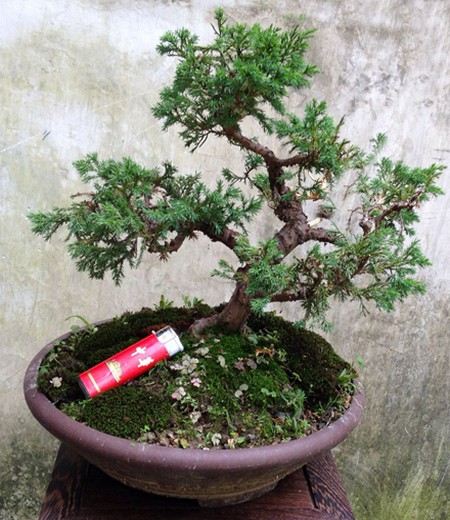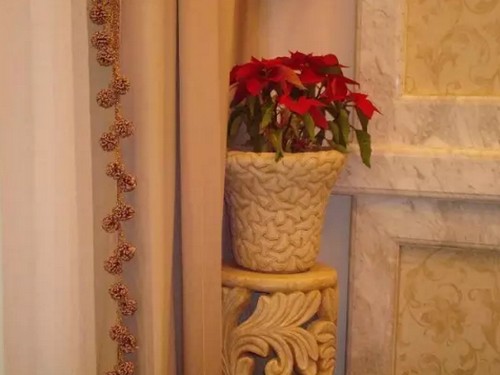Bonsai creation: seek simplicity in complexity and apply art in accordance with their aptitude.
The creative process of bonsai art is a long, meticulous and laborious process. It is necessary to master the basic knowledge of tradition, but also to savor all kinds of knowledge brought by experience in careful and meticulous work. To put it bluntly, it is to seek a way out in the basic rules and regulations, and it is definitely not blindly drawing a gourd.

Therefore, we should seek simpler and easier operation methods in the basic operation process and rules. Everything has its evolution law. Can we better grasp this law and scientifically and effectively change this law in practice? Let people grasp this law more easily, simplify concepts, and break traditional restrictions. This is the topic that contemporary bonsai people need to study.
When looking at nature, be good at choosing. As the old saying goes,"How can a thousand miles of mountains be strange, and a thousand miles of water cannot be beautiful." Another cloud: "touch the eye horizontal oblique ten thousand flowers, appreciate the heart only two or three branches." There is omission, there is prominence. In order to highlight what should stand out, create bonsai like sculpture, removing those useless parts. If you don't add trade-offs, it is easy to cause the phenomenon of weight, guests or scenery complexity. Only by grasping the characteristics of the scenery, deleting complexity and simplifying, or seeking simplicity in complexity, can we defeat many with less and see people with small ones, thus concentrating and typically reproducing the natural scenery of human beings. For example, if you want to create a landscape bonsai work with the theme of concave water of Li River, if you copy nature and completely reduce it according to the real scene, you can only show all the peaks and wonders of Li River in the basin nearby. Even if you make it, there is no beauty of painting. Only by depicting one or two strange peaks and scenery with charm in the basin can you receive the artistic effect of seeking simplicity in complexity. Stump bonsai is a strange tree stump of nature. Through artificial techniques, it highlights the lonely height of the trunk, the elegance of the branches and leaves, and the charm of elegance and richness. Therefore, it must be simplified to express its artistic beauty.
Simplicity in complexity is an important rule in artistic creation. Generally speaking, if you can give up, you can give up, and if you can throw it away, you can throw it away. Just as Zheng Banqiao, a painter of Qing Dynasty, said in his paintings: "One or two bamboo poles, five or six leaves, naturally sparse and faint, why overlap... Therefore, simplicity is a means, not an end." In fact, it already contains the author's subjective aesthetic feeling, and the scenery represented by the work has also been processed and transformed by the author, so it is higher, more beautiful, more concentrated and more typical than the real scenery.
One of the important aesthetic characteristics of bonsai is to apply art according to materials. The main materials used in bonsai, such as plants, rocks, soil and water, belong to the same category as the objects they represent. These materials themselves have certain natural forms and colors, among which plants have life characteristics, so they can endow bonsai with natural beauty, which is impossible for other plastic arts such as painting. However, the characteristics of bonsai materials also limit the shape of bonsai to some extent. Painting can draw all kinds of mountains and rivers and trees on a piece of white paper, while bonsai must be made according to the characteristics of different materials, according to the situation, let nature take its course, determine how to shape, how to express the theme according to the material. That's how we do it. In the tree bonsai, for pine, it is appropriate to show its vigorous; For cypress, it is appropriate to show its ancient simplicity, plum can show its sparse shadow horizontal oblique, bamboo is elegant and sparse. If the pine and cypress performance graceful charming, vine performance vigorous, so does not conform to the principle of applying art according to materials, so the work is unsuccessful.
In landscape bonsai, according to the natural beauty contained in different stones, such as texture, shape, wrinkles and colors, different themes can be expressed, and various artistic shapes can be made by artificial processing. For example, the stone body is slender and the texture is straight, which can be used to express steep peaks; Loose texture, easy to carve sand stone, pumice stone, chicken bone stone, etc., can be used to express various shallow wrinkled peaks in Song Dynasty; Round smooth pebbles, the official performance of coastal scenery; White Xuan stone, sea white stone can express snow scenery, mountains and rivers, etc.
Whether it is plant material or rock material, after careful examination in the process of processing modeling, according to the natural beauty of the material, what theme should be expressed, and then modeling. Therefore, according to the material buried can make bonsai works both appropriate artificial, but also natural wild interest. Artificial is important, completely let nature, there is no bonsai art. But the artificial axe chisels are too much, but they lose their nature. Therefore, we should neither completely abandon nature nor completely rely on artificial, so that bonsai works can truly achieve the organic combination of natural beauty and artistic beauty.
Time: 2019-05-23 Click:
- Prev

The naming of bonsai
The name of bonsai is also an excuse that we often take pride in, and at the same time, it is often used to belittle others, thinking that there is no name on the lack of artistic conception, etc. If so, Lao Tzu said: Tao can be Tao, very Tao; Name can be named, very name. So what's wrong with having no name? No name, no name.
- Next

The Beauty of Sandstone Bonsai
Sandstone is a kind of sedimentary rock, which is formed by stone particles deposited on the riverbed through water erosion and hardened through thousands of years of accumulation. Later, the earth crustal movement, and the formation of today's mine. Sandstone is one of the most widely used building stones. Buildings decorated with sandstone hundreds of years ago still retain their charm
Related
- Fuxing push coffee new agricultural production and marketing class: lack of small-scale processing plants
- Jujube rice field leisure farm deep ploughing Yilan for five years to create a space for organic food and play
- Nongyu Farm-A trial of organic papaya for brave women with advanced technology
- Four points for attention in the prevention and control of diseases and insect pests of edible fungi
- How to add nutrient solution to Edible Fungi
- Is there any good way to control edible fungus mites?
- Open Inoculation Technology of Edible Fungi
- Is there any clever way to use fertilizer for edible fungus in winter?
- What agents are used to kill the pathogens of edible fungi in the mushroom shed?
- Rapid drying of Edible Fungi

